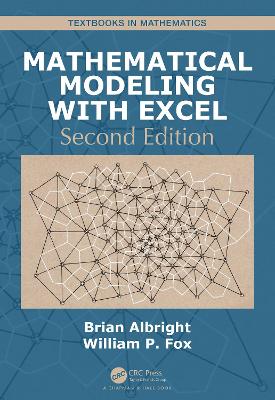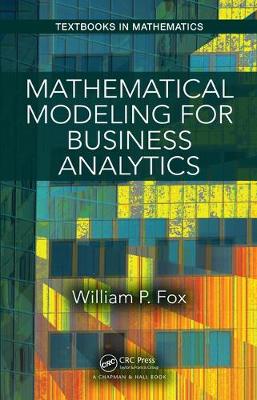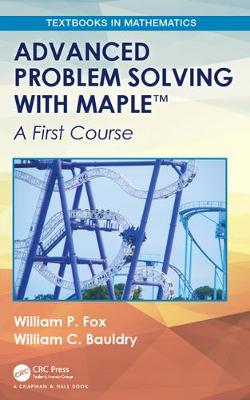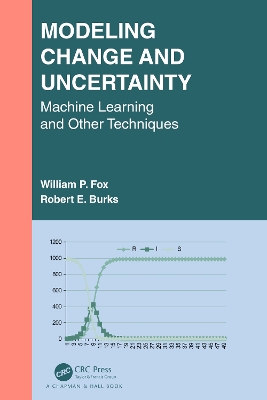Textbooks in Mathematics
7 total works
This text presents a wide variety of common types of models found in other mathematical modeling texts, as well as some new types. However, the models are presented in a very unique format. A typical section begins with a general description of the scenario being modeled. The model is then built using the appropriate mathematical tools. Then it is implemented and analyzed in Excel via step-by-step instructions. In the exercises, we ask students to modify or refine the existing model, analyze it further, or adapt it to similar scenarios.
Optimization is the act of obtaining the "best" result under given circumstances. In design, construction, and maintenance of any engineering system, engineers must make technological and managerial decisions to minimize either the effort or cost required or to maximize benefits. There is no single method available for solving all optimization problems efficiently. Several optimization methods have been developed for different types of problems. The optimum-seeking methods are mathematical programming techniques (specifically, nonlinear programming techniques).
Nonlinear Optimization: Models and Applications presents the concepts in several ways to foster understanding. Geometric interpretation: is used to re-enforce the concepts and to foster understanding of the mathematical procedures. The student sees that many problems can be analyzed, and approximate solutions found before analytical solutions techniques are applied. Numerical approximations: early on, the student is exposed to numerical techniques. These numerical procedures are algorithmic and iterative. Worksheets are provided in Excel, MATLAB®, and Maple™ to facilitate the procedure. Algorithms: all algorithms are provided with a step-by-step format. Examples follow the summary to illustrate its use and application.
Nonlinear Optimization: Models and Applications:
- Emphasizes process and interpretation throughout
- Presents a general classification of optimization problems
- Addresses situations that lead to models illustrating many types of optimization problems
- Emphasizes model formulations
- Addresses a special class of problems that can be solved using only elementary calculus
- Emphasizes model solution and model sensitivity analysis
About the author:
William P. Fox is an emeritus professor in the Department of Defense Analysis at the Naval Postgraduate School. He received his Ph.D. at Clemson University and has taught at the United States Military Academy and at Francis Marion University where he was the chair of mathematics. He has written many publications, including over 20 books and over 150 journal articles. Currently, he is an adjunct professor in the Department of Mathematics at the College of William and Mary. He is the emeritus director of both the High School Mathematical Contest in Modeling and the Mathematical Contest in Modeling.
Mathematical Modeling for Business Analytics is written for decision makers at all levels. This book presents the latest tools and techniques available to help in the decision process. The interpretation and explanation of the results are crucial to understanding the strengths and limitations of modeling. This book emphasizes and focuses on the aspects of constructing a useful model formulation, as well as building the skills required for decision analysis. The book also focuses on sensitivity analysis.
The author encourages readers to formally think about solving problems by using a thorough process. Many scenarios and illustrative examples are provided to help solve problems. Each chapter is also comprehensively arranged so that readers gain an in-depth understanding of the subject which includes introductions, background information and analysis. Both undergraduate and graduate students taking methods courses in methods and discrete mathematical modeling courses will greatly benefit from using this book.
- Boasts many illustrative examples to help solve problems
- Provides many solutions for each chapter
- Emphasizes model formulation and helps create model building skills for decision analysis
- Provides the tools to support analysis and interpretation
Problem Solving is essential to solve real-world problems. Advanced Problem Solving with Maple: A First Course applies the mathematical modeling process by formulating, building, solving, analyzing, and criticizing mathematical models. It is intended for a course introducing students to mathematical topics they will revisit within their further studies.
The authors present mathematical modeling and problem-solving topics using Maple as the computer algebra system for mathematical explorations, as well as obtaining plots that help readers perform analyses. The book presents cogent applications that demonstrate an effective use of Maple, provide discussions of the results obtained using Maple, and stimulate thought and analysis of additional applications.
Highlights:
- The book’s real-world case studies prepare the student for modeling applications
- Bridges the study of topics and applications to various fields of mathematics, science, and engineering
- Features a flexible format and tiered approach offers courses for students at various levels
- The book can be used for students with only algebra or calculus behind them
About the authors:
Dr. William P. Fox is an emeritus professor in the Department of Defense Analysis at the Naval Postgraduate School. Currently, he is an adjunct professor, Department of Mathematics, the College of William and Mary. He received his Ph.D. at Clemson University and has many publications and scholarly activities including twenty books and over one hundred and fifty journal articles.
William C. Bauldry, Prof. Emeritus and Adjunct Research Prof. of Mathematics at Appalachian State University, received his PhD in Approximation Theory from Ohio State. He has published many papers on pedagogy and technology, often using Maple, and has been the PI of several NSF-funded projects incorporating technology and modeling into math courses. He currently serves as Associate Director of COMAP’s Math Contest in Modeling (MCM).
*Please note that the Maple package, "PSM", is now on the public area of the Maple Cloud. To access it:
• From the web:
1. Go to the website https://maple.cloud
2. Click on "packages" in the left navigation pane
3. Click on "PSM" in the list of packages.
4. Click the "Download" button to capture the package.
• From Maple:
1. Click on the Maple Cloud icon (far right in the Maple window toolbar).
Or click on the Maple Cloud button on Maple's Start page to go to the website.
2. Click on the "packages" in the navigation pane
3. Click on "PSM" in the list of packages.
The package then downloads into Maple directly.
Advanced Problem Solving Using Maple
by William P. Fox and William C. Bauldry
Advanced Problem Solving Using Maple™: Applied Mathematics, Operations Research, Business Analytics, and Decision Analysis applies the mathematical modeling process by formulating, building, solving, analyzing, and criticizing mathematical models. Scenarios are developed within the scope of the problem-solving process.
The text focuses on discrete dynamical systems, optimization techniques, single-variable unconstrained optimization and applied problems, and numerical search methods. Additional coverage includes multivariable unconstrained and constrained techniques. Linear algebra techniques to model and solve problems such as the Leontief model, and advanced regression techniques including nonlinear, logistics, and Poisson are covered. Game theory, the Nash equilibrium, and Nash arbitration are also included.
Features:
- The text’s case studies and student projects involve students with real-world problem solving
- Focuses on numerical solution techniques in dynamical systems, optimization, and numerical analysis
- The numerical procedures discussed in the text are algorithmic and iterative
- Maple is utilized throughout the text as a tool for computation and analysis
- All algorithms are provided with step-by-step formats
About the Authors:
William P. Fox is an emeritus professor in the Department of Defense Analysis at the Naval Postgraduate School. Currently, he is an adjunct professor, Department of Mathematics, the College of William and Mary. He received his PhD at Clemson University and has many publications and scholarly activities including twenty books and over one hundred and fifty journal articles.
William C. Bauldry, Prof. Emeritus and Adjunct Research Prof. of Mathematics at Appalachian State University, received his PhD in Approximation Theory from Ohio State. He has published many papers on pedagogy and technology, often using Maple, and has been the PI of several NSF-funded projects incorporating technology and modeling into math courses. He currently serves as Associate Director of COMAP’s Math Contest in Modeling (MCM).
One cannot watch or read about the news these days without hearing about the models for COVID-19 or the testing that must occur to approve vaccines or treatments for the disease.
The purpose of Mathematical Modeling in the Age of a Pandemic is to shed some light on the meaning and interpretations of many of the types of models that are or might be used in the presentation of analysis. Understanding the concepts presented is essential in the entire modeling process of a pandemic.
From the virus itself and its infectious rates and deaths rates to explain the process for testing a vaccine or eventually a cure, the author builds, presents, and shows model testing.
This book is an attempt, based on available data, to add some validity to the models developed and used, showing how close to reality the models are to predicting "results" from previous pandemics such as the Spanish flu in 1918 and more recently the Hong Kong flu. Then the author applies those same models to Italy, New York City, and the United States as a whole.
Modeling is a process. It is essential to understand that there are many assumptions that go into the modeling of each type of model. The assumptions influence the interpretation of the results. Regardless of the modeling approach the results generally indicate approximately the same results. This book reveals how these interesting results are obtained.
Mathematical modeling is a powerful craft that requires practice. The more practice the better one will become in executing the art. The authors wrote this book to develop the craft of mathematical modeling and to foster a desire for lifelong learning, habits of mind and develop competent and confident problem solvers and decision makers for the 21st century.
This book offers a problem-solving approach. The authors introduce a problem to help motivate the learning of a particular mathematical modeling topic. The problem provides the issue or what is needed to solve using an appropriate modeling technique. Then principles are applied to the problem and present the steps in obtaining an appropriate model to solve the problem.
Modeling Change and Uncertainty:
- Covers both linear and nonlinear models of discrete dynamical systems.
- Introduces statistics and probability modeling.
- Introduces critical statistical concepts to handle univariate and multivariate data.
- Establishes a foundation in probability modeling.
- Uses ordinary differential equations (ODEs) to develop a more robust solution to problems.
- Uses linear programming and machine learning to support decision making.
- Introduces the reality of uncertainty and randomness that is all around us.
- Discusses the use of linear programing to solve common problems in modern industry.
- Discusses he power and limitations of simulations.
- Introduces the methods and formulas used in businesses and financial organizations.
- Introduces valuable techniques using Excel, MAPLE, and R.
Mathematical modeling offers a framework for decision makers in all fields. This framework consists of four key components: the formulation process, the solution process, interpretation of the solution in the context of the actual problem, and sensitivity analysis.
Modeling Change and Uncertainty will be of interest to mathematics departments offering advanced mathematical modeling courses focused on decision making or discrete mathematical modeling and by undergraduate, graduate students and practitioners looking for an opportunity to develop, practice, and apply the craft of mathematical modeling.
Table of Contents
1. Perfect Partners: Combining Models of Change and Uncertainty with Technology
2. Modeling Change: Discrete Dynamical Systems (DDS) and Modeling Systems of DDS
3. Statistical and Probabilistic Models
4. Modeling with Probability
5. Differential Equations
6. Forecasting with Linear Programming and Machine Learning
7. Stochastic Models and Markov Chains
8. Linear Programming
9. Simulation of Queueing Models
10. Modeling of Financial Analysis
11. Reliability Models
12. Machine Learning and Unconstrained Optimal Process
Dr. William P. Fox is currently a visiting professor of Computational Operations Research at the College of William and Mary. He is an emeritus professor in the Department of Defense Analysis at the Naval Postgraduate School and teaches a three-course sequence in mathematical modeling for decision making. He received his Ph.D. in Industrial Engineering from Clemson University. He has taught at the United States Military Academy for twelve years until retiring and at Francis Marion University where he was the chair of mathematics for eight years. He has many publications and scholarly activities including twenty plus books and one hundred and fifty journal articles.
Colonel (R) Robert E. Burks, Jr., Ph.D. is an Associate Professor in the Defense Analysis Department of the Naval Postgraduate School (NPS) and the Director of the NPS’ Wargaming Center. He holds a Ph.D. in Operations Research from the Air Force Institute of Technology. He is a retired logistics Army Colonel with more than thirty years of military experience in leadership, advanced analytics, decision modeling, and logistics operations who served as an Army Operations Research analyst at the Naval Postgraduate School, TRADOC Analysis Center, United States Military Academy, and the United States Army Recruiting Command.
Other book by William P. Fox and Robert E. Burks: Advanced Mathematical Modeling with Technology, 2021, CRC Press.
Other books by William P. Fox from CRC Press:
Mathematical Modeling in the Age of the Pandemic, 2021, CRC Press.
Advanced Problem Solving Using Maple: Applied Mathematics, Operations Research, Business Analytics, and Decision Analysis (w/William Bauldry), 2020, CRC Press.
Mathematical Modeling with Excel (w/Brian Albright), 2020, CRC Press.
Nonlinear Optimization: Models and Applications, 2020, CRC Press.
Advanced Problem Solving with Maple: A First Course (w/William Bauldry), 2019. CRC Press.
Mathematical Modeling for Business Analytics, 2018, CRC Press.






